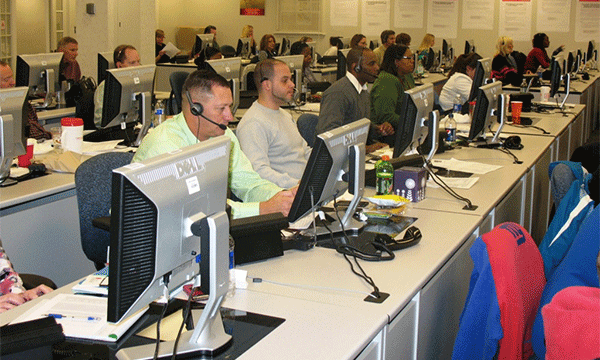The Power of a Smiley Face

In our lifetime we share thousands of smiles, but what power does a smile really have in our daily personal and professional lives?
What is a Smile?
Communication is the exchanging of information between humans, and the most simplistic means to convey this is smiling, a facial expression that is moulded principally, by stretching the muscles at the sides of the mouth. Smiling can signify happiness, amusement, pleasure or sociability.
Science of Smiling
In a positive and happy circumstance, neuronal signals will proceed from the cerebrum / cortex of the brain to the brainstem. The signal is then carried through the cranial muscles en-route to the smiling muscles in the face. But it doesn’t end there! Once the smiling muscles have compressed, positive feedback loops back to the brain, which emphasises the feeling of delight.
Co-founder and COO at Buffer, Leo Widrich explains: “Smiling stimulates our brain’s reward mechanisms in a way that even chocolate, a well-regarded pleasure-inducer, cannot match.”
The human brain may not respond the same way between smiling and eating chocolate, but smiling has been linked to give the same exercise induced happiness. This is a continuous cycle, the brain feels good and instructs the face to smile, the face smiles and sends feedback back to the brain that smiling feels good.
Social Effects
Having a favourable influence, a smile seems to make a person more approaching and likable, smiling can come before or after laughter, either paving the way to laughter or as a response after laughing.
A smile can be contagious! Coca Cola held an experiment which included how infectious a smile and laugh really can be. By hiring a man to ride a crowded subway train in Belgium, he settled in his position, loaded up his tablet device and started to belt out his laughter. In less than a minute the other passengers in the carriage were sharing smiles with one another and trying to hold back their nervous giggles and belly laughs.
Passengers had interacted with each other through the power of smiling and laughing, whereas normal engagement amongst strangers would be kept to a minimum and their actions kept solitary; reading a book, listening to music, browsing their phone and tablet devices.
Face to Face Smiling
The common phrase “actions speak louder than words” is true when it comes to face-to-face communication. When perceiving the impact of a message, vocal means of communication accounts for 38% whereas body language constitutes 55%.
It is vitally important with customer facing roles that the right message is conveyed, just as words can have several meanings, one gesture can be interpreted in multiple ways.
A genuine smile on a business representative’s face will help form a customer’s positive first impression of the organisation. The smile should be saying “I’m so glad to see you” helping to reduce the consumer’s fear of the unknown even if it is their 1st or their 100th visit. It builds trust to make the customer feel good about doing business with the representative/company.
Psychology Today explained that “Each time you smile at a person; their brain coaxes them to return the favor. You are creating a symbiotic relationship that allows both of you to release feel good chemicals in your brain."
It can be a struggle to share a smile, as a fast-paced, smartphone-addicted, multitask driven culture has been created, customers are more distracted now than ever.
Smiling Digitally
Across digital platforms, “smilies” are used; they are a stylised illustration of a human face smiling. Throughout the internet and plain text communication channel, the emoticon form, also known as the smiley-face emoticon, is a graphic representation of facial expression using punctuation marks, numbers and letters.
The smiley-face emoticon typically consists of a colon and a type of brackets to the right, when viewed at 90 degrees it resembles a smiling face :). As the digital age advanced the requirements for smileys that were globally understood resulted in the emoji, characters images that include facial expressions, common objects, places, types of weather and animals.
Individuals are more relaxed using smileys and emoji’s through their personal communications including text and social media interactions. However they have been seeping into work life through email and web chat system engagements.
Internal policies should be reviewed before sharing smileys within the workplace, as they may only be allowed within digital communication if they match the recipients tone.
Friday got us Smiling
An observation made by Click4Assistance is that people tend to keep smilies and emoji’s to a minimum Monday to Thursday, however on Friday more smiley faces appear amongst emails and in chat.
People tend to be happier on Fridays, with the weekend in sight. Fridays also bring diversions to diet plans, putting down that salad and joining in with the office “Fat Friday” is bound to make everyone happy (and then regret it later!)
Friday’s are actually considered unlucky in some cultures, especially in maritime circles, stemming from the 19th Century it is believed that it is unfortunate to instigate a voyage on a Friday. Friday the 13th is considered to be unlucky in modern times, due to the combination of Friday with the number 13. However some cultures including Roman Catholics consider Fridays as lucky, with a heavy emphasis on Good Friday.
Conclusion
Whether you believe Friday’s are lucky or not and the only reason you are smiling is that you are about to leave for the weekend, share a smile throughout the week. Spread a little happiness to everyone and add a little :) to the end of your emails.
























